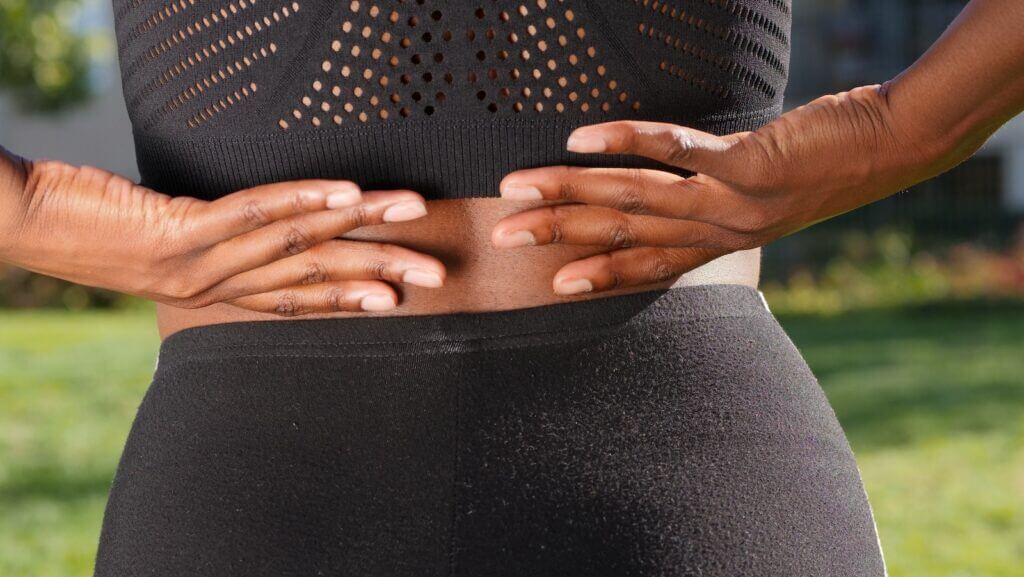Have you ever experienced that sharp, nagging pain in your ribs after a run? It’s not exactly the victory lap you were expecting, right? Well, you’re not alone. Many runners have wondered, “Why do my ribs hurt after running?”
- Side Stitches: Those pesky side stitches, often felt on one side of the abdomen, can actually cause rib pain.
- Diaphragm Stress: The diaphragm, a muscle crucial for breathing, can become strained during intense running, leading to rib discomfort.
- Poor Breathing Techniques: Improper breathing patterns, such as shallow or irregular breaths, can contribute to rib pain.
- Overexertion: Pushing yourself too hard or engaging in sudden, intense workouts can strain the intercostal muscles between the ribs.
- Impact and Ground Forces: The repetitive impact and ground forces absorbed by your body during running can also lead to rib soreness.
In this blog post, we’ll delve deeper into these reasons and explore additional factors that could be causing your rib pain after running. Plus, we’ll share practical tips to prevent and alleviate this discomfort.
So, lace up your shoes and let’s get to the bottom of why your ribs might be protesting after your runs!
Table of Contents
Why Do My Ribs Hurt After Running? 7 Reasons

If you’ve ever experienced rib pain after running, you’re not alone. Many runners encounter this discomfort, and there are several possible reasons why it happens. Let’s explore seven common explanations for why your ribs might hurt after a run.
1. Side Stitches
One of the most common causes of rib pain during or after running is a side stitch. Do you know that sharp, stabbing pain on one side of your abdomen or just below your ribs? That’s a side stitch.
It’s often caused by the strain put on your diaphragm, the muscle responsible for breathing while running. The repetitive motion can lead to cramping or spasms, resulting in discomfort around your ribs.
2. Rapid Breathing and Shallow Breaths
During an intense run, it’s natural to take quick and shallow breaths. However, this rapid breathing pattern can contribute to rib pain. When you breathe rapidly, your diaphragm and surrounding muscles may not have enough time to fully relax between breaths. As a result, they can become tense and strained, leading to pain in the rib area.
3. Poor Core Strength and Stability
Having a weak core can make you more susceptible to rib pain while running. Your core muscles, including your abdominals and back muscles, play a crucial role in maintaining stability and absorbing impact during physical activities like running. If your core is weak, the impact of running may put excessive strain on your ribs, leading to discomfort and soreness.
Imagine your core muscles as a supportive belt around your midsection. If the belt is loose or weak, it won’t effectively support your body, and the impact of running will be felt more intensely in your ribs.
Read: Can Running Give You Abs?
4. Incorrect Breathing Technique
Believe it or not, the way you breathe while running can affect the pain in your ribs. If you’re breathing shallowly into your chest instead of deep into your diaphragm, you may be putting unnecessary strain on your ribs. This shallow breathing can contribute to muscle tension and discomfort in the rib area.
To avoid this, focus on deep belly breathing while running. Inhale deeply, allowing your abdomen to expand, and exhale fully, letting your abdomen deflate. This breathing technique can help reduce strain on your ribs and promote relaxation of the surrounding muscles.
5. Improper Warm-Up or Cool-Down
Skipping a proper warm-up or cool-down before and after your run can increase the likelihood of rib pain. Warm-up exercises, such as light jogging, dynamic stretches, and core activation exercises, prepare your body for the upcoming physical activity. They increase blood flow, warm up the muscles, and improve flexibility, reducing the chances of injury or discomfort.
Similarly, a cool-down routine consisting of gentle stretching and deep breathing helps your body recover and gradually return to its resting state. Neglecting these essential steps can leave your body more susceptible to rib pain and other post-run discomforts.
Read: The Essential Guide to an Effective Running Warm-Up
6. Running on Uneven Surfaces
Running on uneven surfaces can place uneven stress on your body, including your ribs. If you frequently run on surfaces like trails, grass, or uneven pavement, the constant adjustments your body makes to maintain balance can lead to rib pain. Uneven surfaces can also increase the risk of tripping or falling, further impacting your ribs.
Read: Trail Running vs Road Running: Which Is Right for You?
7. Underlying Medical Conditions
In some cases, rib pain after running may be a symptom of an underlying medical condition. Conditions such as costochondritis (inflammation of the cartilage connecting the ribs to the breastbone), stress fractures, or musculoskeletal imbalances can cause discomfort in the rib area during or after physical activity.
If your rib pain persists or worsens, it’s essential to consult a healthcare professional for proper diagnosis and treatment.
By understanding these potential reasons for rib pain after running, you can take appropriate steps to address the issue and minimize discomfort. Remember to listen to your body, maintain good breathing techniques, strengthen your core, and incorporate proper warm-up and cool-down routines into your running regimen.
Related: How to Loosen Tight Hips Flexors for Better Running
What Are Side Stitches?

Side stitches, also known as exercise-related transient abdominal pain (ETAP), are sharp or cramp-like pains felt on the side of the abdomen, just below the ribs. They often occur during exercise, particularly activities like running, which involve repetitive movements and deep breathing.
- Location: Side stitches typically occur on the right side of the abdomen, just below the ribcage.
- Sensation: The pain is often described as sharp or stabbing, and it may feel like a cramp or muscle spasm.
- Duration: Side stitches can last anywhere from a few seconds to a few minutes, and the intensity can vary.
- Symptoms: Along with the pain, some people may experience difficulty breathing deeply or have a sensation of breathlessness.
Imagine this: You’re out for a run, enjoying the fresh air and pushing yourself to go faster. Suddenly, you feel a sharp pain on the side of your abdomen. That’s a side stitch! It can be quite uncomfortable and may even slow you down.
But don’t worry, in the upcoming sections, we’ll explore the possible causes and ways to prevent side stitches, so you can get back to running smoothly and pain-free.
Causes Of Side Stitch
A side stitch, that sharp pain in your ribs, can really put a damper on your running experience. But why does it happen? Let’s explore some of the main causes of side stitches.
1. Diaphragm Spasms
One common cause of side stitches is spasms in the diaphragm muscle. The diaphragm is a large muscle located beneath your lungs, and it helps you breathe. When you run, your breathing can become irregular, and the diaphragm may start to spasm, causing that uncomfortable pain in your side.
2. Poor Breathing Techniques
Improper breathing techniques can also contribute to side stitches. Shallow and rapid breathing can strain the diaphragm, leading to muscle spasms. It’s important to practice deep belly breathing while running, allowing your diaphragm to fully expand and contract with each breath.
Example: Imagine you’re blowing up a balloon. If you take quick, shallow breaths, you’ll find it harder to inflate the balloon fully. But if you take slow, deep breaths, you’ll have better control and the balloon will fill up easily. The same principle applies to your diaphragm when running.
3. Eating Before Running
Eating a large meal or consuming high-fiber foods right before a run can cause side stitches. When you eat, blood flows to your digestive system to help with digestion. During exercise, your body directs blood flow to your muscles, leaving less blood available for digestion. This can lead to cramping and discomfort in your abdomen, including the side area.
Example: Think of your body as a car. If you fuel up with a big meal and then try to race without giving your body time to process the food, it’s like trying to drive with a full gas tank. The excess fuel can cause the engine to sputter, and you may experience discomfort along the way.
4. Lack of Warm-Up
Starting your run without a proper warm-up can also trigger side stitches. When you jump right into intense exercise, your muscles may not be adequately prepared for the increased demands. This can lead to muscle cramps, including those pesky side stitches.
Example: Picture a rubber band that’s been sitting in a cold room. If you try to stretch it suddenly, it might snap or feel tight. But if you gently warm it up, it becomes more flexible and less likely to cause any issues. The same applies to your muscles before running.
By understanding these common causes of side stitches, you can take steps to prevent them and have a more enjoyable running experience. In the next section, we’ll explore some practical tips on how to prevent side stitches during your runs.
Prevention of Side Stitches
When it comes to preventing side stitches, there are a few practical steps you can take to minimize the chances of experiencing this uncomfortable pain while running. Let’s dive right into them:
1. Warm up Before Running
One of the most effective ways to prevent side stitches is by properly warming up your body before hitting the pavement. Start with a brisk walk or gentle jog for a few minutes to gradually increase your heart rate and warm up your muscles.
This helps to prepare your body for the demands of running, reducing the likelihood of side stitches.
2. Maintain Proper Breathing Technique
Believe it or not, the way you breathe while running can impact the occurrence of side stitches. Taking shallow breaths or breathing too rapidly can put additional strain on your diaphragm, increasing the likelihood of side stitches.
Instead, focus on deep belly breathing, inhaling deeply through your nose and exhaling through your mouth. This helps to relax your diaphragm and ensure efficient oxygen exchange.
3. Gradually Increase Intensity
Avoid sudden increases in running intensity or distance, as this can place excessive stress on your abdominal muscles and lead to side stitches. Instead, aim to gradually increase your running duration or intensity over time.
For example, if you’re currently running for 20 minutes, add an extra 5 minutes to your next session and gradually build up from there. This allows your body to adapt and strengthen the muscles involved in running, reducing the risk of side stitches.
4. Watch Your Diet
What you eat and drink before running can also impact the likelihood of side stitches. Avoid consuming large meals or heavy, fatty foods immediately before running, as these can lead to digestive discomfort and increase the chances of side stitches.
Instead, opt for lighter meals or snacks rich in carbohydrates and easily digestible proteins. Also, ensure you stay hydrated throughout the day, as dehydration can contribute to muscle cramping and side stitches.
Read: Do I Need To Fuel During A Half Marathon?
5. Listen to Your Body
Pay attention to any warning signs or discomfort during your runs. If you start feeling a slight twinge or discomfort around your ribs, slow down your pace or take a short walking break. It’s important to listen to your body and allow it to recover, as pushing through the pain can exacerbate side stitches or lead to other injuries.
By implementing these preventive measures, you can significantly reduce the occurrence of side stitches and enjoy a more comfortable running experience.
Final Thoughts: Why Do My Ribs Hurt After Running?
As we come to the end of our exploration into the discomfort of rib pain after running, it’s essential to remember that each individual’s experience may vary. The seven possible reasons we discussed to shed light on the most common culprits, such as side stitches and muscle strain.
However, it’s crucial to listen to your body and seek professional advice if the pain persists or worsens. Incorporating proper warm-up and stretching techniques, maintaining good posture, and gradually increasing your running intensity can help prevent rib pain in the future.
Remember, running is a journey, and understanding the reasons behind rib pain is a valuable step toward optimizing your running experience. Keep pushing forward, stay attuned to your body, and enjoy the exhilarating joy of running.
You might like
- How to Manage Sore Hips from Running
- 5 Exercises to Improve Running Performance with Weak Hips
- Running with sore calves
Frequently Asked Questions
Why does it hurt around my ribs after running?
The pain around your ribs after running can be caused by various factors. It’s commonly associated with side stitches, which are sharp, cramp-like pains. They occur due to diaphragm muscle spasms or insufficient blood flow to the abdominal area during exercise. To alleviate this pain, try taking deep breaths, exhaling forcefully, or massaging the affected area gently.
How do I stop my ribs from hurting after working out?
To prevent rib pain after working out, it’s important to take some precautions. Firstly, make sure to warm up properly before exercising to prepare your muscles. Pay attention to your breathing during the workout, avoiding shallow breaths. Gradually increase your intensity and pace to allow your body to adapt. Also, maintain good posture and engage your core muscles. Lastly, stay hydrated and consider adjusting your diet to avoid consuming large meals right before exercise.
Why is my back and ribs sore after running?
Soreness in the back and ribs after running may be attributed to muscle strain or fatigue. Running puts stress on various muscles, including those in the back and ribs. It’s essential to have proper running form and ensure your core muscles are engaged to support your back. Gradually increasing your mileage and incorporating rest days into your training can help prevent excessive strain and reduce post-run soreness.
Should I run with sore ribs?
It’s generally not recommended to run with sore ribs as it can exacerbate the pain and potentially lead to further injury. Rest is crucial for the healing process. Take a break from running until the soreness subsides and the discomfort resolves. Use this time to focus on recovery, such as applying ice packs, gently stretching, and avoiding activities that aggravate the pain. If the pain persists or worsens, consult a healthcare professional for guidance.


